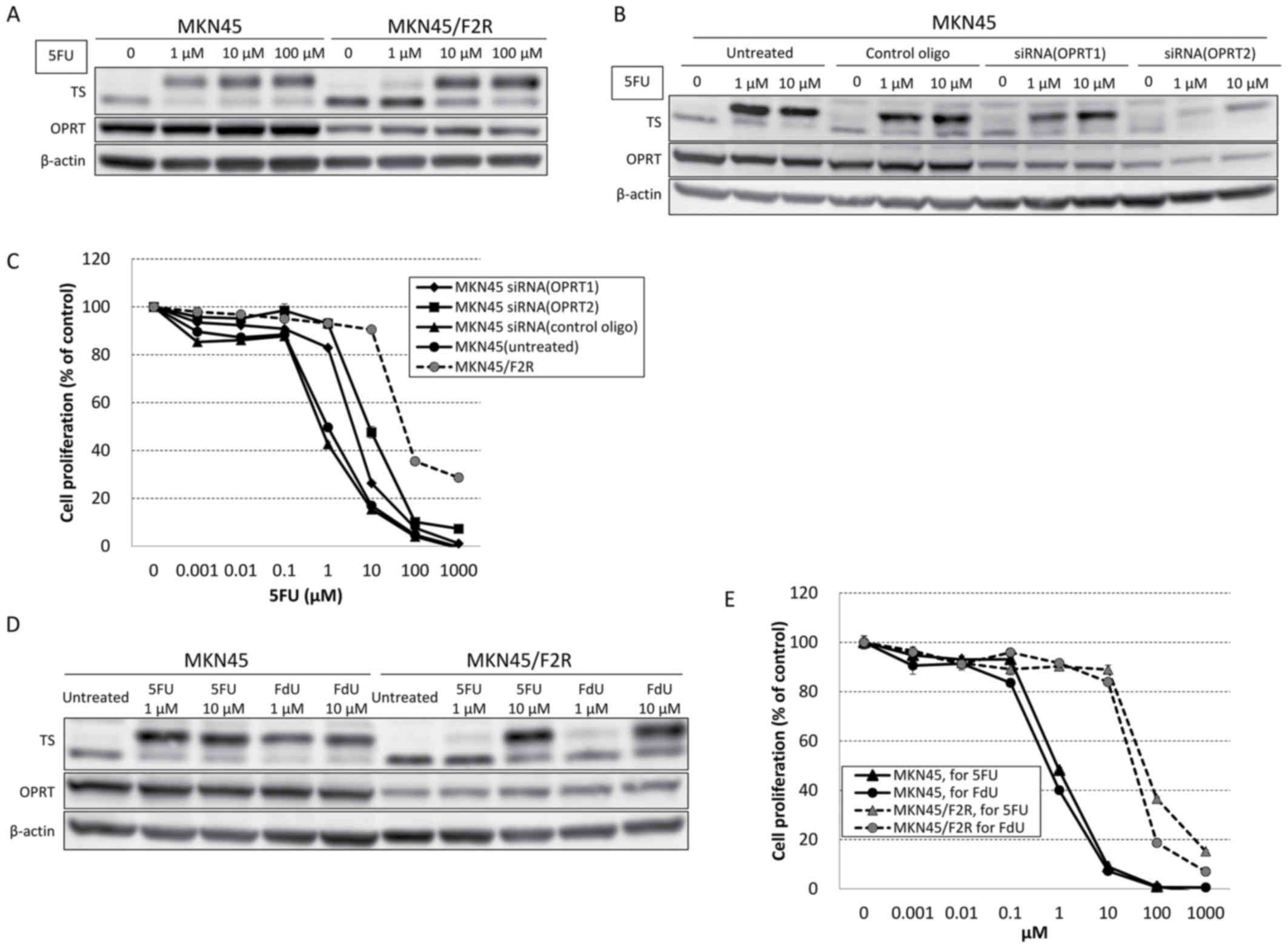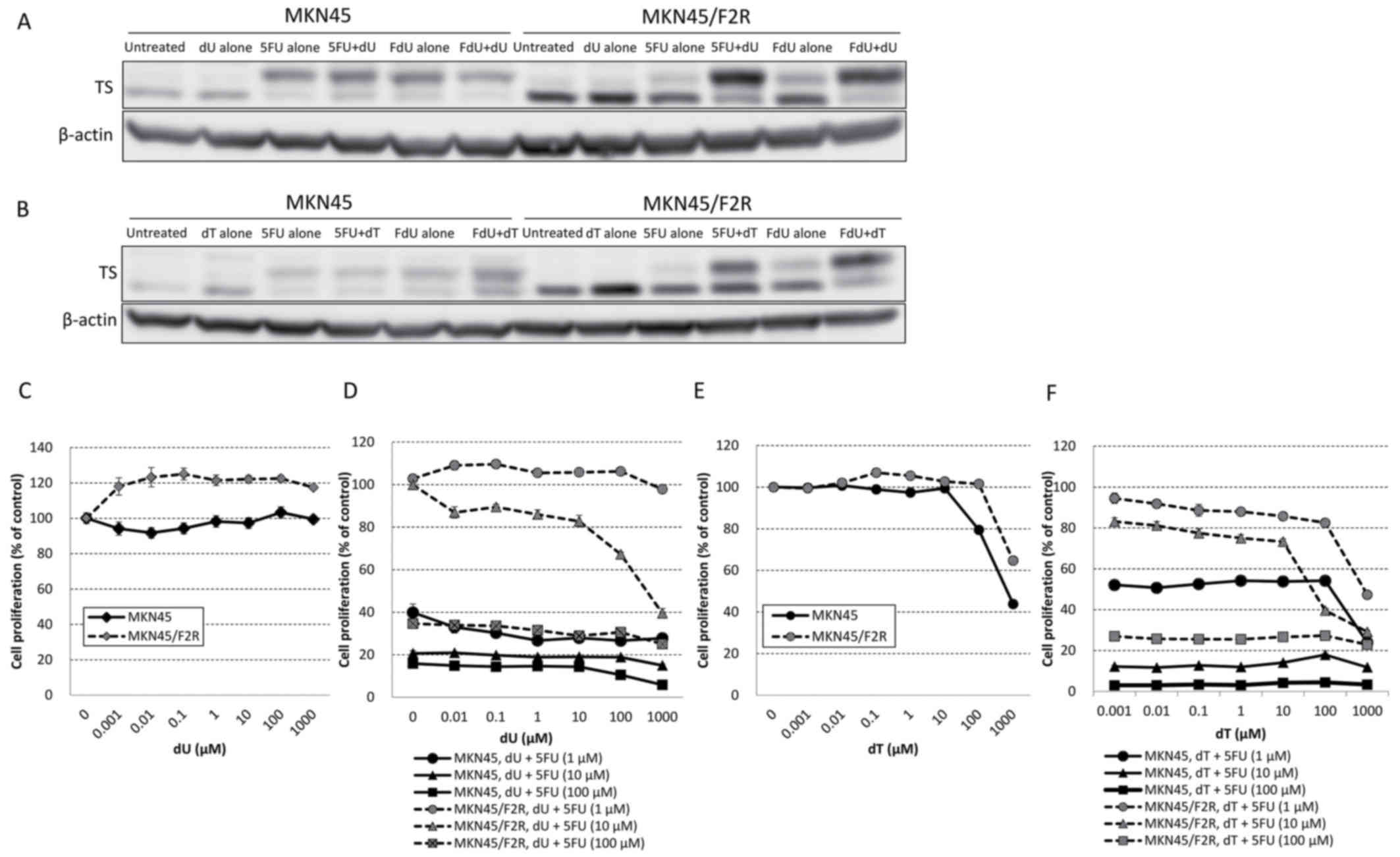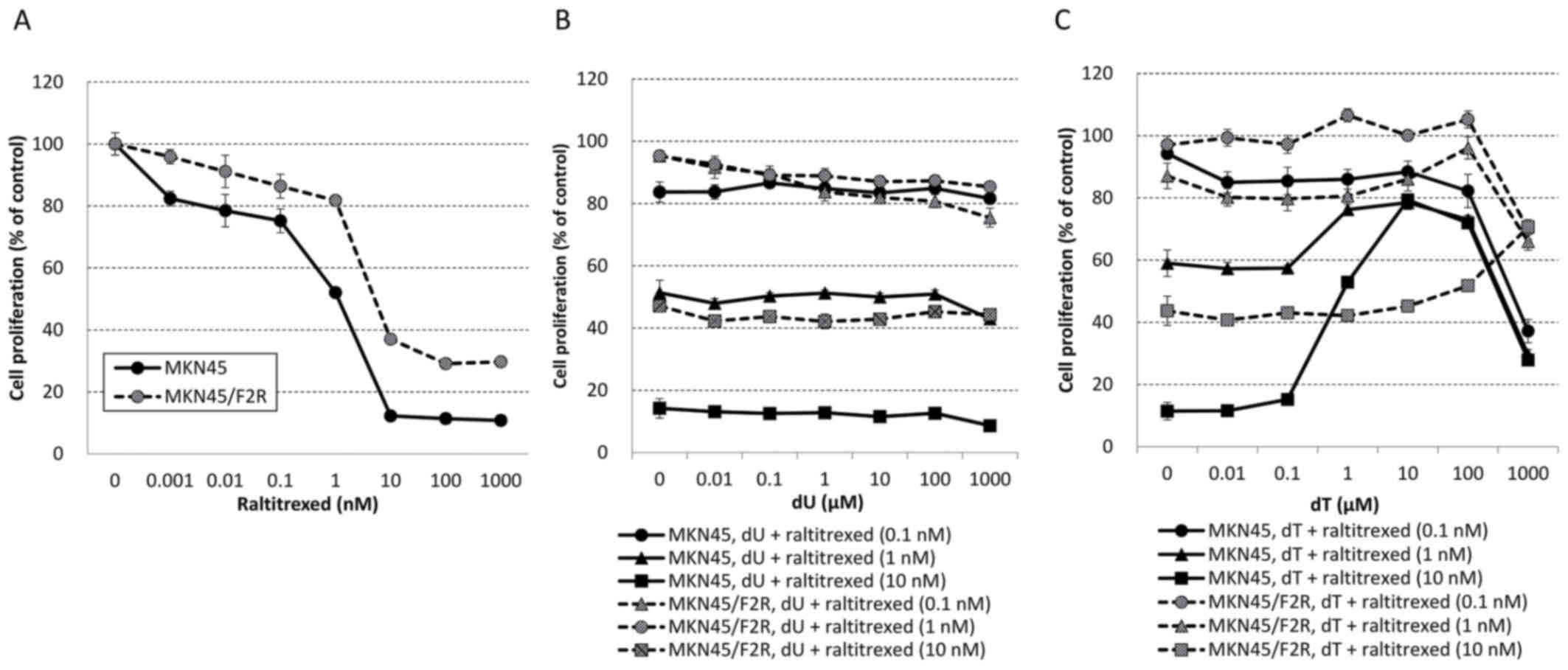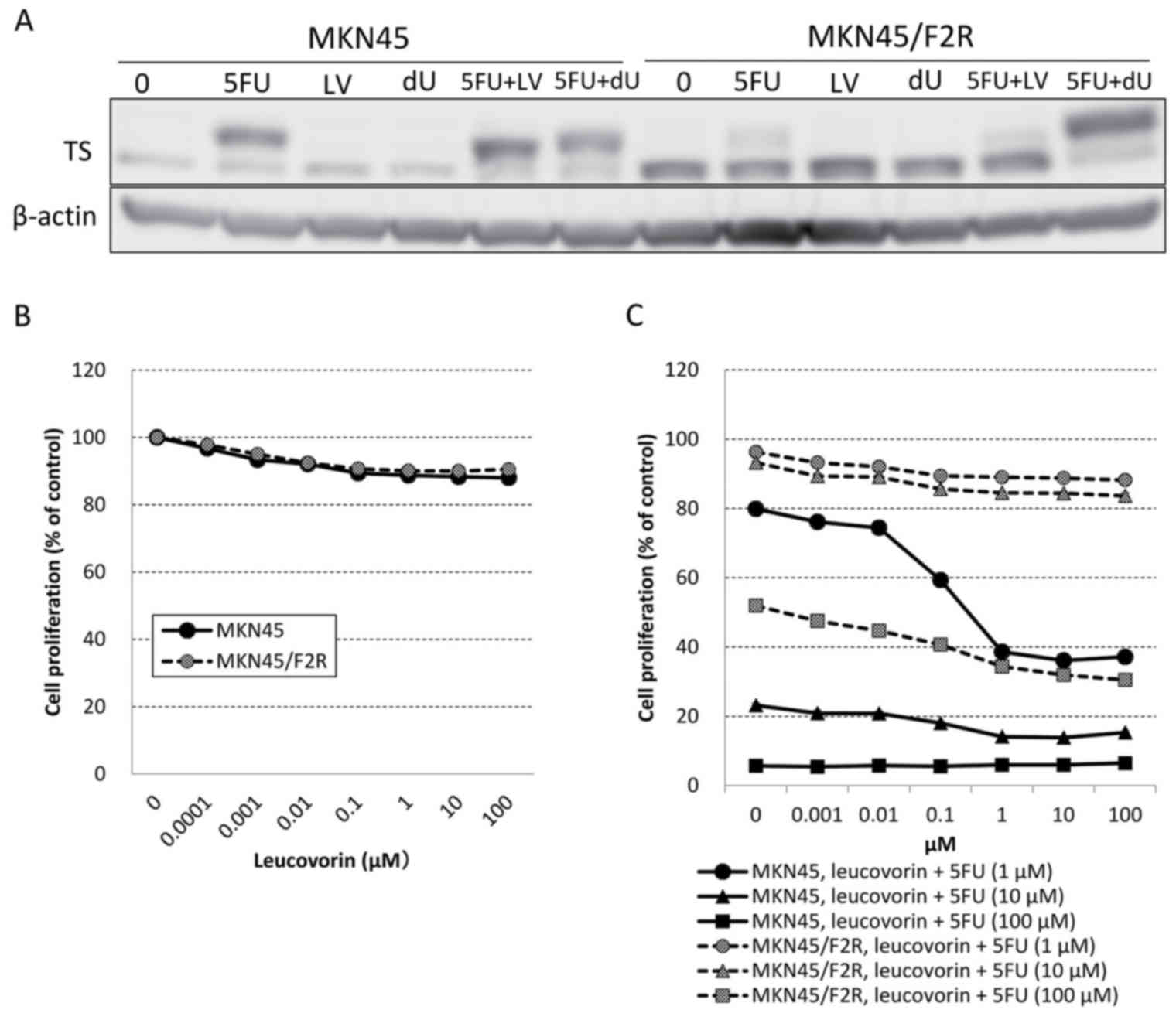|
1
|
Torre LA, Bray F, Siegel RL, Ferlay J,
Lortet-Tieulent J and Jemal A: Global cancer statistics, 2012. CA
Cancer J Clin. 65:87–108. 2015. View Article : Google Scholar : PubMed/NCBI
|
|
2
|
Sakuramoto S, Sasako M, Yamaguchi T,
Kinoshita T, Fujii M, Nashimoto A, Furukawa H, Nakajima T, Ohashi
Y, Imamura H, et al: Adjuvant chemotherapy for gastric cancer with
S-1, an oral fluoropyrimidine. N Engl J Med. 357:1810–1820. 2007.
View Article : Google Scholar : PubMed/NCBI
|
|
3
|
Sasako M, Sakuramoto S, Katai H, Kinoshita
T, Furukawa H, Yamaguchi T, Nashimoto A, Fujii M, Nakajima T and
Ohashi Y: Five-year outcomes of a randomized phase III trial
comparing adjuvant chemotherapy with S-1 versus surgery alone in
stage II or III gastric cancer. J Clin Oncol. 29:4387–4393. 2011.
View Article : Google Scholar : PubMed/NCBI
|
|
4
|
Tsuburaya A, Yoshida K, Kobayashi M,
Yoshino S, Takahashi M, Takiguchi N, Tanabe K, Takahashi N, Imamura
H, Tatsumoto N, et al: Sequential paclitaxel followed by tegafur
and uracil (UFT) or S-1 versus UFT or S-1 monotherapy as adjuvant
chemotherapy for T4a/b gastric cancer (SAMIT): A phase 3 factorial
randomised controlled trial. Lancet Oncol. 15:886–893. 2014.
View Article : Google Scholar : PubMed/NCBI
|
|
5
|
Koizumi W, Narahara H, Hara T, Takagane A,
Akiya T, Takagi M, Miyashita K, Nishizaki T, Kobayashi O, Takiyama
W, et al: S-1 plus cisplatin versus S-1 alone for first-line
treatment of advanced gastric cancer (SPIRITS trial): A phase III
trial. Lancet Oncol. 9:215–221. 2008. View Article : Google Scholar : PubMed/NCBI
|
|
6
|
Koizumi W, Kim YH, Fujii M, Kim HK,
Imamura H, Lee KH, Hara T, Chung HC, Satoh T, Cho JY, et al:
Addition of docetaxel to S-1 without platinum prolongs survival of
patients with advanced gastric cancer: A randomized study (START).
J Cancer Res Clin Oncol. 140:319–328. 2014. View Article : Google Scholar : PubMed/NCBI
|
|
7
|
Kufe DW and Major PP: 5-Fluorouracil
incorporation into human breast carcinoma RNA correlates with
cytotoxicity. J Biol Chem. 256:9802–9805. 1981.PubMed/NCBI
|
|
8
|
Saito K, Nagashima H, Noguchi K, Yoshisue
K, Yokogawa T, Matsushima E, Tahara T and Takagi S: First-in-human,
phase I dose-escalation study of single and multiple doses of a
first-in-class enhancer of fluoropyrimidines, a dUTPase inhibitor
(TAS-114) in healthy male volunteers. Cancer Chemother Pharmacol.
73:577–583. 2014. View Article : Google Scholar : PubMed/NCBI
|
|
9
|
Park JG, Collins JM, Gazdar AF, Allegra
CJ, Steinberg SM, Greene RF and Kramer BS: Enhancement of
fluorinated pyrimidine-induced cytotoxicity by leucovorin in human
colorectal carcinoma cell lines. J Natl Cancer Inst. 80:1560–1564.
1988. View Article : Google Scholar : PubMed/NCBI
|
|
10
|
Longley DB, Harkin DP and Johnston PG:
5-fluorouracil: Mechanisms of action and clinical strategies. Nat
Rev Cancer. 3:330–338. 2003. View
Article : Google Scholar : PubMed/NCBI
|
|
11
|
Goodsell DS: The molecular perspective:
Methotrexate. Oncologist. 4:340–341. 1999.PubMed/NCBI
|
|
12
|
Rose MG, Farrell MP and Schmitz JC:
Thymidylate synthase: A critical target for cancer chemotherapy.
Clin Colorectal Cancer. 1:220–229. 2002. View Article : Google Scholar : PubMed/NCBI
|
|
13
|
Ahmad SI, Kirk SH and Eisenstark A:
Thymine metabolism and thymineless death in prokaryotes and
eukaryotes. Annu Rev Microbiol. 52:591–625. 1998. View Article : Google Scholar : PubMed/NCBI
|
|
14
|
Peters GJ, Laurensse E, Leyva A, Lankelma
J and Pinedo HM: Sensitivity of human, murine and rat cells to
5-fluorouracil and 5′-deoxy-5-fluorouridine in relation to
drug-metabolizing enzymes. Cancer Res. 46:20–28. 1986.PubMed/NCBI
|
|
15
|
Sasako M, Terashima M, Ichikawa W, Ochiai
A, Kitada K, Kurahashi I, Sakuramoto S, Katai H, Sano T and Imamura
H: Impact of the expression of thymidylate synthase and
dihydropyrimidine dehydrogenase genes on survival in stage II/III
gastric cancer. Gastric Cancer. 18:538–548. 2015. View Article : Google Scholar : PubMed/NCBI
|
|
16
|
Patel K, Yerram SR, Azad NA and Kern SE: A
thymidylate synthase ternary complex-specific antibody, FTS,
permits functional monitoring of fluoropyrimidines dosing.
Oncotarget. 3:678–685. 2012. View Article : Google Scholar : PubMed/NCBI
|
|
17
|
Tsutani Y, Yoshida K, Sanada Y, Wada Y,
Konishi K, Fukushima M and Okada M: Decreased orotate
phosphoribosyltransferase activity produces 5-fluorouracil
resistance in a human gastric cancer cell line. Oncol Rep.
20:1545–1551. 2008.PubMed/NCBI
|
|
18
|
Drake JC, Allegra CJ and Johnston PG:
Immunological quantitation of thymidylate
synthase-FdUMP-5,10-methylenetetrahydrofolate ternary complex with
the monoclonal antibody TS 106. Anticancer Drugs. 4:431–435. 1993.
View Article : Google Scholar : PubMed/NCBI
|
|
19
|
Levin RD and Gordon JH: Fluorodeoxyuridine
with continuous leucovorin infusion. A phase II clinical trial in
patients with metastatic colorectal cancer. Cancer. 72:2895–2901.
1993. View Article : Google Scholar : PubMed/NCBI
|
|
20
|
Myers CE, Young RC and Chabner BA:
Biochemical determinants of 5-fluorouracil response in vivo. The
role of deoxyuridylate pool expansion. J Clin Invest. 56:1231–1238.
1975. View Article : Google Scholar : PubMed/NCBI
|
|
21
|
Howell SB, Ensminger WD, Krishan A and
Frei E III: Thymidine rescue of high-dose methotrexate in humans.
Cancer Res. 38:325–330. 1978.PubMed/NCBI
|
|
22
|
Francini G, Petrioli R, Lorenzini L,
Mancini S, Armenio S, Tanzini G, Marsili S, Aquino A, Marzocca G,
Civitelli S, et al: Folinic acid and 5-fluorouracil as adjuvant
chemotherapy in colon cancer. Gastroenterology. 106:899–906. 1994.
View Article : Google Scholar : PubMed/NCBI
|
|
23
|
Kodera Y, Ito S, Fujiwara M, Mochizuki Y,
Nakayama G, Ohashi N, Koike M, Yamamura Y and Nakao A: Gene
expression of 5-fluorouracil metabolic enzymes in primary gastric
cancer: Correlation with drug sensitivity against 5-fluorouracil.
Cancer Lett. 252:307–313. 2007. View Article : Google Scholar : PubMed/NCBI
|
|
24
|
Isshi K, Sakuyama T, Gen T, Nakamura Y,
Kuroda T, Katuyama T and Maekawa Y: Predicting 5-FU sensitivity
using human colorectal cancer specimens: Comparison of tumor
dihydropyrimidine dehydrogenase and orotate phosphoribosyl
transferase activities with in vitro chemosensitivity to 5-FU. Int
J Clin Oncol. 7:335–342. 2002. View Article : Google Scholar : PubMed/NCBI
|
|
25
|
Santelli G and Valeriote F: In vivo
potentiation of 5-fluorouracil cytotoxicity against AKR leukemia by
purines, pyrimidines, and their nucleosides and deoxynucleosides. J
Natl Cancer Inst. 64:69–72. 1980.PubMed/NCBI
|
|
26
|
Spiegelman S, Sawyer R, Nayak R, Ritzi E,
Stolfi R and Martin D: Improving the anti-tumor activity of
5-fluorouracil by increasing its incorporation into RNA via
metabolic modulation. Proc Natl Acad Sci USA. 77:pp. 4966–4970.
1980; View Article : Google Scholar : PubMed/NCBI
|
|
27
|
Hunsucker SA, Spychala J and Mitchell BS:
Human cytosolic 5′-nucleotidase I: Characterization and role in
nucleoside analog resistance. J Biol Chem. 276:10498–10504. 2001.
View Article : Google Scholar : PubMed/NCBI
|


















